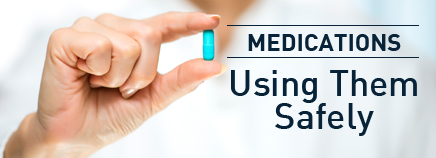About Lead Poisoning If you have young kids, it’s important to find out whether there’s any risk that they might be exposed to lead, especially if you live in an older home. Many toys and other products from outside the United States have also been found to contain lead. Long-term …
Leaving Your Child Home Alone
Whether it’s a snow day home from school, an unexpected business appointment, or a childcare arrangement that fell through, situations are likely to arise where you feel you have little choice but to leave your child home alone. It’s natural for parents to be a bit anxious when first leaving kids …
Making Sure Your Teen’s Job Is Safe
Teen Safety at Work Your 13-year-old comes to you and asks permission to start babysitting so she can earn enough money for that new video game. Or maybe your 16-year-old wants to work at the local fast-food restaurant so he can save money for a car. If you’re like many …
Making the Holidays Safe
Family gatherings, special traditions, delicious treats — the holiday season may be the most wonderful time of the year, especially for kids. Unfortunately, for emergency room doctors it’s also one of the busiest. Learn how to protect your little ones from some common holiday dangers, so you and your family can …
Medications: Using Them Safely
Medication Safety Giving kids medicine safely can be complicated. And many parents feel the pressure when a young child needs certain medications, knowing that giving too much or too little could cause serious side effects. But with a little knowledge and a lot of double-checking, you can give your kids medicine safely and …
Preventing Dog Bites
Most kids don’t think a cuddly dog would ever hurt them, but the fact is about 4.7 million dog bites happen every year in the United States — and more than half of kids bitten are under age 14. Dog bites can be much more than an innocent little nip, …
Selecting Safe Pets
Pets love us unconditionally. They’re also great for our health — mentally and physically. Caring for pets can boost self-esteem, prevent loneliness, and even lower heart rate and blood pressure in some people. Growing up with a pet can be wonderful for kids. But remember that although the experience gives …
Selecting Safe Pets
Pets love us unconditionally. They’re also great for our health — mentally and physically. Caring for pets can boost self-esteem, prevent loneliness, and even lower heart rate and blood pressure in some people. Growing up with a pet can be wonderful for kids. But remember that although the experience gives …
Sexting: What Parents Need to Know
These days, almost every teen has many ways to get online: via smartphones, tablets, and laptops, all of which can be used in private. It’s very easy for teens to create and share personal photos and videos of themselves without their parents knowing about it. Most of the time, this …
Taking Care of Your Grandchildren
When you take care of your grandkids — whether it’s for a few hours or a few days — you’re probably excited to put all of your great parenting experience to good use. But you may want to brush up on a few childcare basics. Government agencies and medical experts …










